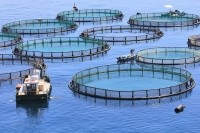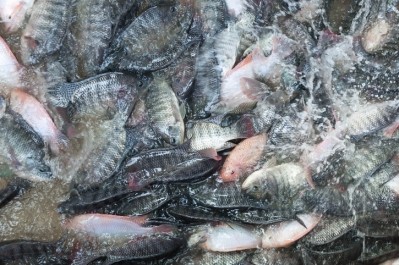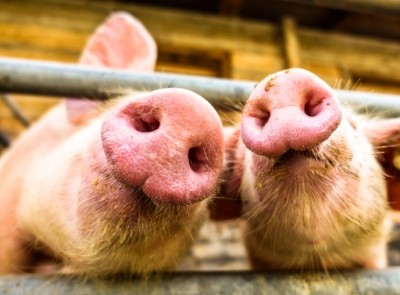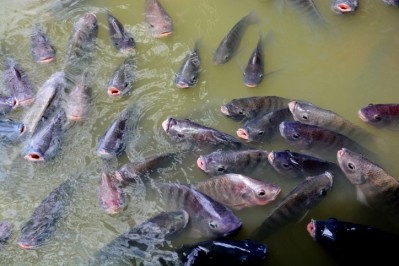Coated salt supplements may boost fish biomass gain, feed efficiency
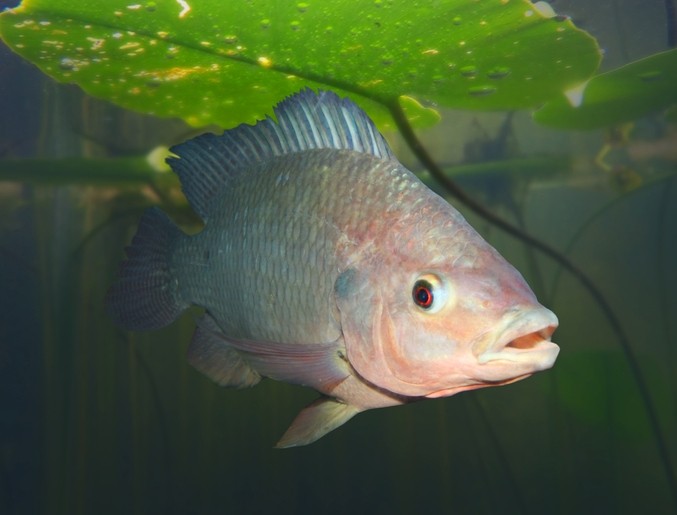
A team of researchers in Brazil explored the use of unprotected sodium butyrate (Na-butyrate) or the additive coated with a buffer or palm oil in the diets of Nile tilapia and the influence the feed additive had on fish growth, health and sexual reversion.
The team published its work in the journal, Aquaculture.
“The present study aimed to verify the effect of Na-butyrate in a protected and unprotected forms under two different concentrations (0.25% or 0.5%) on the growth performance, hematological parameters and resistance to Aeromonas hydrophila in Nile tilapia, during the sexual reversion,” the researchers said.
The researchers found that adding the Na-butyrate did not alter the process of sexual reversal. However, fish yield and biomass gain increased for fish receiving a larger amount of the coated supplement and the feed conversion ratio improved for some supplemented fish.
“An increase in the red blood cells (RBC) and monocytes were observed in fish fed Buffer 0.5% and Oil 0.25% when compared to control group, while those fed Pure 0.25% and Oil 0.5% showed the lowest monocytes number when compared to Buffer0.5% and Oil0.25%,” they said. Although, fish on all the diets had similar results when facing a disease challenge.
“The use of coated Na-butyrate either in buffer or oil showed to be feasible to improve the zootechnical parameters of Nile tilapia during the sexual reversion period,” they added.
Aquaculture and disease
Salts from organic acids can be used as a preventative feed additive to support the health of farm-raised fish, said the researchers. The additives have been linked to a reduction in the growth of pathogenic bacteria and an improvement in fish performance, nutrient absorption and digestion.
In tilapia production, one way disease is spread is when fish carrying disease, but not showing symptoms of it, are added to a population, they said.
“After sexual reversion phase that consists in one of the most critical stages in tilapia production cycle, the fingerlings are marketed to different production units and can spread the pathogens to different regions,” the researchers said. “Therefore, the use of tools to improve the nutritional quality and animal health during sexual reversion is fundamental for sustainable aquaculture and productive chain.”
Work exploring the use of organic acids or salts derived from organic acids has been started in recent years, they said. However, much of the work has examined the use of citric acid or formic acids and the related salts.
Single-sex production of tilapia
Sexual reversion is one process used to establish an all-male population of tilapia, according to researchers at the Nigerian Institute for Oceanography and Marine Research.
Raising the fish in a single-gender environment is considered a way to produce more, improve growth and create fish uniformity as male tilapia grow more quickly.
In aquaculture environments, tilapia’s early maturity would allow a mixed gender population to breed on a monthly basis and potentially cause overcrowding.
Why feed sodium butyrate?
In the gastrointestinal tract, organic acids may slow the growth of pathogenic bacteria or support fish growth performance, the researchers said.
Within an animal, organic acids may act in several different ways, they said. Including being lipophilic, diffusing through the bacterial cell wall, by lowering internal pH or by limiting enzymatic reactions in a manner that promotes bacterial death.
A previous study looking at 0.2% potassium diformate (KDF) as a feed additive for red hybrid tilapia found a drop in mortality when the fish were challenged with Streptococcus agalactiae, they said.
A feeding trial using an organic acid mix with Nile tilapia saw improved disease resistance and growth, while a third reported carcass yield and fish health improvements following the feeding of blended formic acid, propionic acid and calcium propionate.
The short-chain fatty acid butyric acid becomes sodium butyrate when it is chelated to sodium, they said. The salt tends to have higher stability and less odor than the acid.
“Among the organic salts used in animal production, butyrate has been emphasized due to its positive effects on the gastrointestinal tract of animals,” the researchers said.
Butyrate can be generated through the fermentation of positive bacteria found in the intestinal tract, they said. But, oral supplementation with no protective element can see limited effectiveness in the intestinal tract.
“For the use of salts and organic acids in fish diets there is a need for adaptations, since there are essential anatomical and physiological differences in the digestive system of aquatic animals when compared to terrestrials,” they said.
Coating salts with vegetable oils may provide protection and ensure that that the organic acid is absorbed in the intestinal tract rather than just in the small intestine as well as reducing leaching into the environment.
However, there has been little work done looking at the potential for use of organic salts during the sexual reversion phase in Nile tilapia, they said.
Feeding trial details
In the feeding trial seven experimental diets were generated including a non-supplemented control and six diets supplemented with either 0.25% or 0.5% Na-butyrate, the researchers said.
The supplemented diets used a commercially available Na-butyrate that was not encapsulated (Pure), a commercially available product coated with palm oil (Oil) or a commercially available product coated with a buffer (Buffer).
“After diet preparation, the fish received 60 mg of methyl-testosterone kg−1 of feed to induce the masculinization of the animals,” they said. “The hormone was incorporated into the feed by mixing it with 400 mL of alcohol (96° GL) kg −1 of prepared diet.”
Samples of the diets generated were checked for moisture, crude protein, ether extract, ash and crude fiber, the researchers said.
At the end of the 28-day feeding trial, fish’s biomass gain, weight gain, survival, yield, feed conversion and protein efficiency ratio (PER) were recorded, they said.
A selection of fish also was harvested to check for gender and blood samples were collected for analysis.
Following the feeding trial, 30 fish from each diet were exposed to a disease challenge from A. hydrophila then returned to their previous tanks, the researchers said.
A negative control, for fish not exposed to the disease also was included.
All fish were watched for 14 days to check mortality levels, they said. Samples from the kidney, spleen and liver also were collected.
Results
The addition of 60mg kg-1 was effective and no females were found during the inspection, the researchers said. Addition of Na-butyrate did not alter the sexual reversal process.
Tilapia receiving supplemented feed at 0.5% coated in oil or the buffer saw the best increase in biomass and yield, compared to the control, they said. Fish on the Oil 0.5% diet had the best feed conversion and PER, while, fish on all diets had similar weight gain and survival rates.
Fish on the Buffer 0.5% and Oil 0.25% had increased red blood cell counts compared to control, they said. However, no difference in fish survival following the disease challenge was noted.
“The use of coated forms (Buffer 0.5% and Oil 0.5%) of Na-butyrate at the concentration of 0.5% showed increased zootechnical parameters of the animals, not influencing the efficiency of the sexual reversion presenting itself as a viable alternative to be commercially applied,” the researchers said.
Source: Aquaculture
DOI: doi.org/10.1016/j.aquaculture.2018.09.027
Title: Protected forms of sodium butyrate improve the growth and health of Nile tilapia fingerlings during sexual reversion
Authors: G. Jesus, S. Pereira, M. Owatari, N. Syracuse, B. Silva, A. Silva, B. Pierri, N. Lehmann, H. Figueiredo, D. Fracalossi, J. Mouriño, M. Martins
